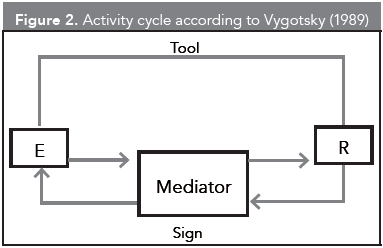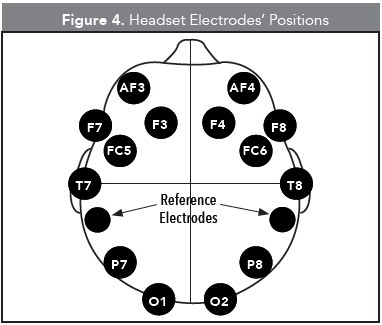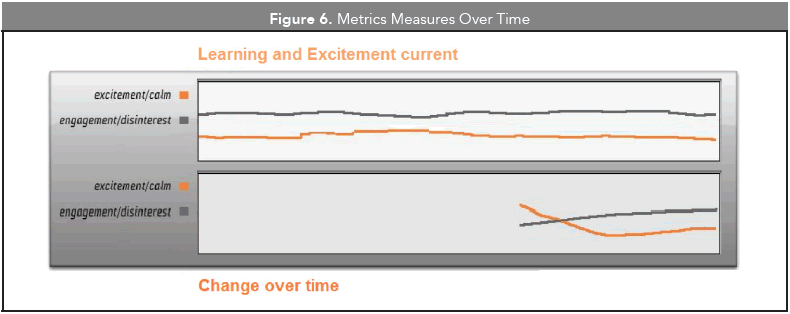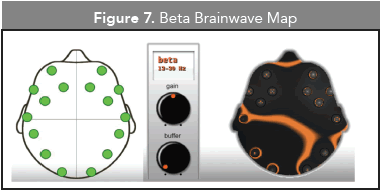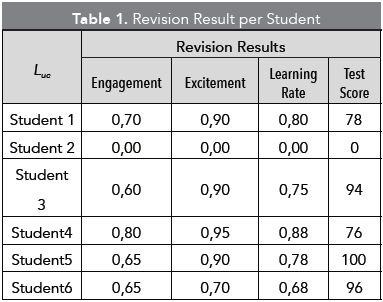Services on Demand
Journal
Article
Indicators
-
 Cited by SciELO
Cited by SciELO -
 Access statistics
Access statistics
Related links
-
 Cited by Google
Cited by Google -
 Similars in
SciELO
Similars in
SciELO -
 Similars in Google
Similars in Google
Share
Revista EIA
Print version ISSN 1794-1237
Rev.EIA.Esc.Ing.Antioq no.23 Envigado June 2015
BRAIN IMAGING AS SOURCE OF DATA FOR PROFILING LEARNERS IN VIRTUAL EDUCATION
IMAGIMÁTICA CEREBRAL COMO FUENTE DE DATOS PARA LA PERFILACIÓN DE APRENDICES EN EDUCACIÓN VIRTUAL
IMAGIMÁTICA CEREBRAL COMO FONTE DE DADOS PARA CARACTERIZAÇÃO DE APRENDIZES NO ENSINO VIRTUAL
Julián Gaviria Giraldo1, Jovani Alberto Jiménez Builes2, John William Branch Bedoya3
1 Ingeniero informático Politécnico Jaime Isaza Cadavid. Especialización Pedagogía para profesionales Universidad San Buenaventura. MCs. en Ingeniería de Sistemas Universidad Nacional de Colombia sede Medellín. PhD. en Ingeniería de Sistemas e Informática Universidad Nacional de Colombia sede Medellín.
2 Licenciatura en Docencia de Computadores Universidad de Medellín. MCs. en Ingeniería de Sistemas Universidad Nacional de Colombia. PhD. en Ingeniería Sistemas e Informática Universidad Nacional de Colombia. Cra. 80 Nro. 65-223, Oficina M8A-309, Facultad de Minas, Medellín, Colombia. Tel: (574) 425 52 22. Correo electrónico: jajimen1@unal.edu.co.
3 Ingeniero de Minas y Metalurgia Universidad Nacional sede Medellín. MCs. en Ingeniería de Sistemas Universidad Nacional de Colombia sede Medellín. PhD. en Ingeniería de Sistemas. Magister en ingeniería de sistemas, Universidad Nacional de Colombia sede Medellín.
Artículo recibido: 20-IX-2013 / Aprobado: 21-II-2015
Disponible online: 30 de junio de 2015
Discusión abierta hasta junio de 2016
ABSTRACT
This work proposes and demonstrates that mind reading is currently possible in terms of characterizing someone's brain responses to a specific action. For this work some responses named cognitive neuroscience variables are used. In other words, this work is framed in the learning field, and solves effectively one issue: personalizing content through the identification of an individual's learning style in virtual education.
KEYWORDS: Learning; Profiling; Cognitive Neuroscience Variables; Learning Styles; Artificial intelligence.
RESUMEN
Este trabajo propone y demuestra que la lectura del cerebro es posible en la actualidad en cuanto a la caracterización de las respuestas de éste expuesto a una acción específica. Para este trabajo algunas variables mencionadas de neurociencia cognitivas se utilizan. En otras palabras, este trabajo se enmarca en el campo del aprendizaje, y resuelve con eficacia un problema: la personalización de contenidos en la educación virtual a través de la identificación del estilo de aprendizaje de un individuo.
PALABRAS CLAVE: Aprendizaje; perfilación; variable de neurociencia cognitiva; estilo de aprendizaje; inteligencia artificial.
RESUMO
Este artigo propõe e demonstra que a leitura do cérebro é possível na atualidade a respeito da caracterização das respostas deste exposto a uma ação específica. Para este trabalho algumas variáveis mencionadas de neurociência cognitiva são usadas. Em outras palavras, este trabalho faz parte do domínio da aprendizagem e, efetivamente, resolve um problema: a personalização de conteúdos em educação virtual, identificando o estilo de aprendizagem de um indivíduo.
PALAVRAS-CHAVE: Aprendizagem, perfilhação; Variável da neurociência cognitiva; estilo de aprendizagem.
1. INTRODUCTION
Education must respond to individualize students. It must take into account the particular way an individual learns and thus deliver learning material that best fits their learning needs. Although the individualization of education offers many advantages; the educational model in a classroom does not allow conducting such individual characterization because of the number of individuals that a teacher must attend.
Brain imaging is an extensive researched field especially in neuroscience. There have been developed many imaging methods depending on a specific purposed. EEG (Electroencephalogram) is currently in reach, this paper is going to show the reader how some reactions to exposed phenomena can be tracked and characterized. Brainwaves, especially those in the Beta brainwave band (15Hz to 30Hz), allow researchers to account emotions and use them for different proposes like the one being developed in this work: Learner Profiling. An experiment was conducted with real students and results are explained within the Overall Results of the proposed mechanism section.
This paper is structured in four main sections as follows: The first section provides an introduction on how learning process is represented. Subsequent section summarizes basic elements of interaction between learners and computers that allows us to think of different stimuli involved in this action. Then results and discussion sections define the process and considerations to take into account for imaging and scoring the neuroscience variables chosen. It explains how learning style and material classification are combined to profile a learner based on an emotion or action that affects the brain; and experimental results are presented to show effectiveness of the proposed mechanism. Finally, conclusions are outlined showing the advantages and challenges of profiling learners.
2. MATERIALS AND METHODS
2.1. Learning Process Representation
According to the definition of cognitive psychology it is suggested that information processing in an individual (Rivière, 1987). concerns the explanation of behavior to mental entities, states, processes and provisions of mental nature. Most authors of modern psychology agree that the action of a subject is determined by their performances. According to Lachman, Butterfield, (1979), information processing in an individual is more restrictive and only consider a relatively basic symbolic operations such as encoding, compare, locate, store, etc. These operations can account for human intelligence and the ability to create knowledge.
As illustrated in Figure 1 the fundamental assumption of information processing in an individual can be more easily understood by decomposing it into more simple new events (Palmer y Kimchi, 1986).
From this feature it can be concluded that both the human and computer are conceived as logical systems that process information and are constituted by formal procedures.
2.2. Concept Formation in Computer Mediated Learning
Having the need to build and upload content to a management learning system raises the requirement to provide the ability for content acquisition. This research is focused on the characterization of such content according to theories and parameters. They provide the information processing general principles when an individual learns through measurable variables of cognitive neuroscience straight from the source, the human brain.
Figure 2 shows two types of mediators: the tools which act directly on stimuli, modifying them; and signs which change the subject itself and through this to stimuli. According to Vygotsky true concepts are acquired through training and they have three characteristics in their acquisition:
- True concepts are part of a system.
- They are acquired through consciousness of their own mental activity.
- It involves a special relationship with the object based on the internalization of the concept essence.
The first two features are related to concepts acquisition. They are key for achieving the third. It can be distinguished two important variables or emotions subject to be measured by exposure to stimuli: conscious commitment (engagement), a special relationship with a learning object (excitement).
2.3 Tracking Emotions
Many researches such as brain injury and neuroimaging have shown that all animals, including humans exhibit strong instinctive responses to stimuli of change (Darwin, 1998). The responses of the brain have been studied extensively by neuroimaging; these responses are processed and largely mediated by the amygdalae, subcortical structures with connections to both early sensory processing and autonomic reflex centers.
Verbal and non-verbal cues have been widely used to detect human emotion. Vocal tract formation (Waaramaa, et al., 2 010) the change in the tone of speech and behavioral speech production process (e.g duration, pause) are some of the features that have been used to detect the humans emotion from auditory signals. Facial expressions can also be used to detect emotional states. Position or displacement of specific points and regions of the face are used to find a correlation between emotion and facial expression (Pantic, Rothkrantz, 2000). It should be noted that using facial expression is limited to face-to-face interaction and may not always be detectable. Most recent works interpret anxiety from physiological signals such as heart rate, peripheral temperature, and skin conductivity for emotion detection (Takahashi, 2004). However, the main challenge in emotion detection arises from the fact that emotion is an internal state that may not be reflected through behavior. Therefore, facial expression and speech do not always coincide with internal mood.
A good idea for this is using electroencephalographic (EEG) signals for detecting human emotions. Frontal lobe activity which is characterized in terms of decreased power in certain frequency bands has been consistently found to be associated with emotional states (Coan, Allen, 2004). The best known correlates of emotionality found with EEG involve prefrontal asymmetry, that is, a positive affect is associated with greater activity in the left prefrontal region than in the right side, and negative affect with the reverse. Brain activity signals have been also used to detect the level of emotion during seeing emotionallycharged scenes. Zhang and Lee (2009) used a combination of functional magnetic resonance imaging (fMRI) and EEG signals to analyze and classify the emotional states stimulated by a natural scene. Schaa and Schultz (2009) used single EEG signals recording to classify human emotion induced by emotional pictures into three categories of pleasant, natural and unpleasant and reported and average recognition rate of 47%. Frantzidis, et al., (2010) used multichannel EEG evoked by pleasant and unpleasant stimulus to classify human's emotion. Using Mahalanobis (MHV) distance-based classifier and support vector machines (SVMs), they could achieve overall classification rates of 79.5% and 81.3% in the discrimination of pleasant and unpleasant emotions.
The goal of this research is to use a functional MRI (fMRI) to determine how cognitive evaluation of emotional stimuli, especially those involving learning such as engagement and excitement, affects neural activity in the amygdalae and to examine the dynamics of the neural structures and systems involved.
The difference in the response to stimuli reflects sensitivity to the emotional stimuli. It can be argued that the response and the stimuli matched and their correlation reflects a functional specificity and cortical modulation can be measured (Hariri, et al., 1999). Recent research has also demonstrated that some degree of emotionality may also be inferred by neurologic response as measured by electroencephalogram (Khalili, Moradi, 2009). Output from electroencephalograph (EEG) has been used to classify emotional state into distinct categories. These studies use Artificial Intelligence (AI) learning techniques to classify affective state into a small number of categories with moderate success.
3. RESULTS AND DISCUSSION
The experiment was designed into four different steps as follows: first how to record and update brain imaging information; then which emotions can be tracked and how to score them; after that how to classify different learning materials; finally the process categorization of students according to their performance with the materials provided.
3.1. Brain Imaging
Interpreting the student problem solving to produce a profile involves taking the brain-imaging data stream and identifying the mental states in the behavioral model.
This research has used an integration of a CBR (Case-based Reasoning) tutoring system that teaches a topic of a curriculum for learning mathematics with a profiling learning system that would be use a source for providing a personalized learning material case an then for revising the case being used. The tutoring system has a minimalist design to facilitate experimental control and detailed data collection. Nonetheless, it has the basic components of a cognitive tutor: instruction when new material is introduced, help upon request, and error flagging during problem solving. We are concerned with tracking students' mental states as they work through problems after the initial instruction in a Learning Management System (LMS) or virtual Learning Object (VLO).
3.2. Scoring Behavior
In general, the greater the increase in physiological arousal the greater the output score for the detection. Instantaneous Excitement is experienced as an awareness or feeling of physiological arousal with a positive value. Excitement is characterized by activation in the sympathetic nervous system which results in a range of physiological responses including pupil dilation, eye widening, sweat gland stimulation, heart rate and muscle tension increases, blood diversion, and digestive inhibition. The Instantaneous Excitement detection is tuned to provide output scores that more accurately reflect short-term changes in excitement over time periods as short as several seconds.
Long-Term Excitement is experienced and defined in the same way as Instantaneous Excitement, but the detection is designed and tuned to be more accurate when measuring changes in excitement over longer time periods, typically measured in minutes.
Engagement is experienced as alertness and the conscious direction of attention towards task relevant stimuli. It is characterized by increased physiological arousal and beta waves (a well-known type of EEG waveform) along with attenuated alpha waves (another type of EEG waveform).
The opposite pole of this detection is referred to as "Boredom"; however, please note that this does not always correspond to a subjective emotional experience that all users describe as boredom.
3.3. Virtual Learning Materials
Learners and materials must be classified into the following learning styles in order to match learners' needs. Figure 3 displays how a specific material may affect a specific learner's style. One of this research's goals is to prove and provide how a student feels into each one and has a more accurate source for providing a student profile to a learning system.
Brain-imaging data come from interaction with different materials, which are classified in 7 types according to the graph by Elaine Montambeau (2013).
3.4 Classification Process
We used brain imaging data when interacting to determine what material a learner feels better working on and what level of engagement is performing within a specific type of material. Determining what learning style is the student at is one of this research's segmentation goals. The imaging data is used to determine whether the material is going to be used to attend the learner's need. I refer to this as the diagnosis goal. These goals were chosen because there is a hard definition of ground truth. The computer logs of the students' progress through these materials. A learner wearing an EEG headset must be scanned in the following points as illustrated in Figure 4. Electrodes are placed carefully monitoring their appropriate functioning through color yellow and green.
To get more insight into the information carried by each features, it can also be ranked all the features based on the electrode location.
Figure 5 shows the classification rate of each of three classes just by using all features of single electrode. This figure suggests that using features of each channel would help to get the maximum classification rate, for all fourteen channels, is achievable. But for this research purpose only the predefine engagement and excitement variables are going to be used at the same levels: low, medium and high.
3.5. Learner Classifi cation Metrics
Taking advantage of the electrical currents produced by the neurons and the magnetic fields (Bennett, Hacker, 2008), it can be measured different points that allowed us to see how a specific emotion or action affects human brain.
For this purpose two different variables were chosen, excitement and engagement changing over time and rating the necessary time invested to reach learning goals as shown in Figure 6. Excitement has to do with the pleasure felt when doing or thinking about something we like and engagement how concentrated and attracted we feel.
Brain activity can be mapped in a specific time or using an average activity. Video recording of mapping is also made in order to see how brain areas respond to specific actions within the materials being evaluated in the Beta brainwave band (15-30Hz) - indicating wakefulness, alertness, mental engagement and conscious processing of information (Figure 7).
3.6. Overall Results of the proposed mechanism
The proposed mechanism was implemented on a SCORM-compatible LMS (Moodle 1.9) material.
The brain imaging was performed using an Emotive Neuro-headset. Moodle and MySQL server are adopted to be the sample database. To perform this experiment, six elementary school students were randomly collected and recorded. Five different topics were design into a VLO and uploaded to the LMS (Moodle), each topic was designed in a different material type (M). The learning style of a student is determined through interaction and the variables measured.
As can be seen in Table 1 the proposed mechanism is very effective since 100 percent students showed to score the same class where they were first classified (Medium and High) and then improve in the test. There's a special case to be noticed, students 4 and 5 showed very low scores during profiling. Their best score in materials were 0,50 and 0,55, but in the revision (taking a test) student 4 surprisingly improve to 0,88 and score 76 in the test; while student 6 remain the same score, but improve surprisingly in the test.
4. CONCLUSIONS
Many researches are showing that a simple innovation in our education system produces vast improvements in students' abilities to learn. It recognizes that most students learn different subjects at varying rates. It notes that students should not be stigmatized by failing a class. They should move from their homerooms to each subject according to their abilities.
Students would attend the grade level in each appropriate course to them. Many students learn subjects at different rates, and may even learn one subject more rapidly while being delayed in learning another. Thus, for instance, a fifth-grade student could be in fifth-grade while attending fifth-grade English, fourth-grade math and sixth-grade science. This minimizes stigmatizing students for not being in their proper grade level, at least in homeroom. It avoids the problems of failing or promoting a student in all subjects, which is what many schools do (Czikowsky, 2013).
Classification is designed to help students develop a sense of self through building confidence in their abilities to become independent learners. It will develop those strategies needed to communicate their ideas and knowledge of concepts taught.
An independent learner is one who has developed a schema for learning, or who understands how a pupil learns best. An independent learner has the ability to access cognitive and behavior strategies that make it easier to learn, remember, and relate what is learned. Strategic learning improves memories, including the ability to store and retrieve information. It increases student production and behavior, and heightens the level of the child's engagement in the learning process. Strategic learning promotes the development of the independent learner.
Selection and development of teaching and learning materials to achieve each classification type is really a hard work, further research will be proposed in order to automatize material classification in the way a specific material can be reutilize if it meets a learning purpose, a learning style and an instructional need. Every day, learners come into contact with a vast array of print, visual and multimedia materials in their daily lives. Their exposure to such materials is mediated by parents and other caregivers, by legislation and by social conventions. Educators also have a duty of care to ensure that the teaching and learning materials with which students are presented, or towards which they are directed, are appropriate to their developmental growth and relevant to the achievement of appropriate learning outcomes (Marshall, 2004).
Learner classification has been one of the issues for delivering personalized content. By using engagement and excitement cognitive neuroscience variables this issue can be addressed and solved. Some other techniques offer solutions, but they are easily alterable by external phenomena.
REFERENCES
Bennett, M.; Hacker, P. (2008). History of Cognitive Neuroscience. United Kingdom: Wiley-Blackwell. [ Links ]
Coan, J. A.; Allen, J. J. (2004). Frontal EEG Asymmetry as a Moderator and Mediator of Emotion. Biological Psychology, 67 (1-2), pp. 7-50. [ Links ]
Czikowsky, L. (2013). Pennlive.com. [Online]. Disponible en: http://www.pennlive.com [Consultado 26 agosto 2013] [ Links ].
Darwin, C. 1998. The Expression of the Emotions in Man and Animals. Oxford, New York. [ Links ]
Frantzidis, C.; Bratsas, C.; Klados, M.; Konstantinidis, E.; Lithari, C.; Vivas, A. (2010). On the Classication of Emotional Biosignals Evoked while Viewing a Active Pictures: An Integrated Data Mining Based Approach for Healthcare Applications. IEEE T. Inf. Technol. Biomed, 14 (2), pp. 309-318. [ Links ]
Hariri, A. R.; Bookheimer, S. Y.; Mazziotta, J. C. (1999). Modulating Emotional Responses: Effects of a Neocortical Network on the Limbic System. Neuroreport, 11 (1), pp. 43-48. [ Links ]
Khalili, Z.; Moradi, M. H. (2009). Emotion Recognition System Using Brain and Peripheral Signals: Using Correlation Dimension to Improve the Results of EEG. IJCNN'09 Proceedings of the 2009 International Joint Conference on Neural, pp. 1571-1575. [ Links ]
Lachman, R.; Butterfield, J. (1979). Teorías cognitivas y del aprendizaje. In Cited by J. I. Pozo. Madrid: Ediciones Morata. [ Links ]
Marshall, S. (2004). Choosing and Using Teaching and Learning Materials. (G. Groves, Ed.) Port Road, Australia: DECS Publishing. [ Links ]
Montambeau, J.; Finch, J. (2013). Beyond Bells a Whistles: Affecting Student Learning Through Technology. College of Charleston. [online]. Disponible en: http://www.cofc.edu. [ Links ]
Palmer, S.; Kimchi, R. (1986). The Information Processing Approach to Cognition. In A. t. controversies, and I. T. Robertson (Ed.). Hillsdale, NJ, USA: Erlbaum. [ Links ]
Pantic, M.; Rothkrantz, L. (2000). Automatic Analysis of Facial Expressions: The State of the Art. IEEE T. Pattern. Anal., 22 (12), pp. 1424-1445. [ Links ]
Pozos, J. (1994). Aprendizaje por estructuración. In Teorías Cognitivas del Aprendizaje. Morata, España. [ Links ]
Rivière, A. (1987). El sujeto de la psicología cognitiva. Madrid, Alianza. [ Links ]
Takahashi, K. (2004). Remarks on Svm-Based Emotion Recognition from Multi-Modal Bio-Potential Signals. IEEE Int. Workshop on Robot and Human Interactive Commun, pp. 95-100. [ Links ]
Vygotsky, L. (1989). El desarrollo de los procesos psicológicos superiores. Barcelona: Crítica. [ Links ]
Waaramaa, T.; Laukkanen, A. M.; Airas, M.; Alku, P. (2010). Perception of Emotional Valences and Activity Levels from Vowel Segments of Continuous Speech. Journal of Voice, Official Journal of the Voice Foundation, 24 (1), pp. 30. [ Links ]
Zhang, Q.; Lee, M. (2009). Analysis of Positive and Negative Emotions in Natural Scene Using Brain Activity and GIST. Neurocomputing, 72 (4-6), pp. 1302-1306. [ Links ]













